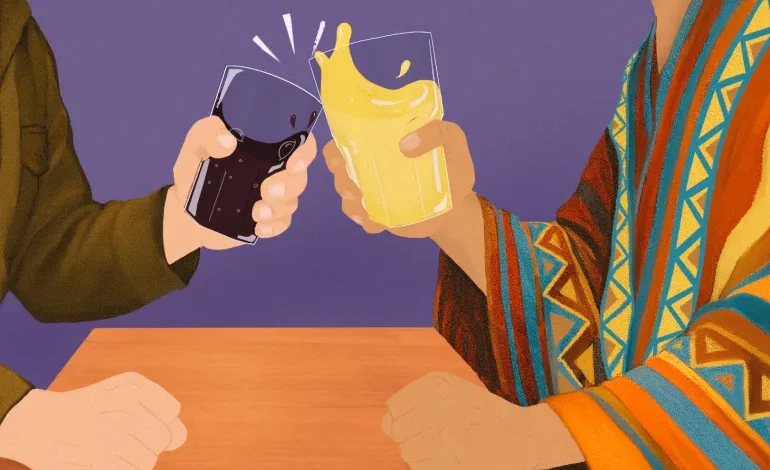How a popular Peruvian soft drink went ‘toe-to-toe’ with Coca-Cola

There are few countries in the world where Coca-Cola isn’t the most popular soft drink. But in Peru, that position is held by Inca Kola – an almost 100-year-old beverage deeply embedded in the national identity.
The yellow soda – meant to evoke the grandeur of the ancient Inca Empire and its reverence for gold – was the creation of Joseph Robinson Lindley. The British immigrant had set out from the coal mining town of Doncaster, England, for Peru in 1910 and soon after set up a drinks factory in a working-class district of the capital, Lima.He started producing small-batch carbonated fruit drinks and gradually expanded. When Inca Kola was created in 1935, with its secret recipe of 13 herbs and aromatics, it was just a year ahead of Coca-Cola’s arrival in the country. Recognising the threat posed by the soft drink giant, which had launched in the US in 1886 and made inroads across Latin America, Lindley invested in the budding television advertising industry to promote Inca Kola.
Advertisement campaigns featuring Inca Kola bottles with their vaguely Indigenous motifs and slogans like “the flavour that unites us” appealed to Peru’s multiethnic society – and to its Inca roots.
It fostered a sense of national pride, explains Andres Macara-Chvili, a marketing professor at the Pontifical Catholic University of Peru. “Inca Kola was one of the first brands in Peru that connected with a sense of Peruanidad, or what it means to be Peruvian. It spoke to Peruvians about what we are – diverse,” he says.But it wasn’t only the drink’s appeal to Peruvian identity or its unique flavour (described by some as tasting like bubblegum, by others as being similar to chamomile tea) that enhanced brand awareness. Amid the turmoil of a world war, Inca Kola would also come to prominence for another reason.Finding opportunity in a wartime boycott
At the tail end of the 1890s, Japan had sent roughly 18,000 contract labourers to Peru. Most went to the country’s budding coastal sugar and cotton plantations. Upon arriving, they found themselves subjected to low wages, exploitative work schedules, and unsanitary and overcrowded living conditions, which led to deadly outbreaks of dysentery and typhus. Unable to afford passage back to Japan after they’d completed their four-year contracts, many of the Japanese labourers remained in Peru – moving to urban centres where they opened businesses, notably bodegas, or small grocery stores.
Denied access to loans from Peruvian banks, as their community grew in number and economic standing, they established their own savings and credit cooperatives.
“Among their community, money began to circulate, and with it they raised the capital to open small businesses,” explains Alejandro Valdez Tamashiro, a researcher of Japanese migration to Peru.Finding opportunity in a wartime boycott
At the tail end of the 1890s, Japan had sent roughly 18,000 contract labourers to Peru. Most went to the country’s budding coastal sugar and cotton plantations. Upon arriving, they found themselves subjected to low wages, exploitative work schedules, and unsanitary and overcrowded living conditions, which led to deadly outbreaks of dysentery and typhus. Unable to afford passage back to Japan after they’d completed their four-year contracts, many of the Japanese labourers remained in Peru – moving to urban centres where they opened businesses, notably bodegas, or small grocery stores.
Denied access to loans from Peruvian banks, as their community grew in number and economic standing, they established their own savings and credit cooperatives.
“Among their community, money began to circulate, and with it they raised the capital to open small businesses,” explains Alejandro Valdez Tamashiro, a researcher of Japanese migration to Peru.Finding opportunity in a wartime boycott
At the tail end of the 1890s, Japan had sent roughly 18,000 contract labourers to Peru. Most went to the country’s budding coastal sugar and cotton plantations. Upon arriving, they found themselves subjected to low wages, exploitative work schedules, and unsanitary and overcrowded living conditions, which led to deadly outbreaks of dysentery and typhus. Unable to afford passage back to Japan after they’d completed their four-year contracts, many of the Japanese labourers remained in Peru – moving to urban centres where they opened businesses, notably bodegas, or small grocery stores.
Denied access to loans from Peruvian banks, as their community grew in number and economic standing, they established their own savings and credit cooperatives.
“Among their community, money began to circulate, and with it they raised the capital to open small businesses,” explains Alejandro Valdez Tamashiro, a researcher of Japanese migration to Peru.Back in Peru, in the wake of the 1941 Japanese attack on Pearl Harbor, Coca-Cola halted distribution of its soda to Peru’s Japanese merchants, whose bodegas were by now one of the main suppliers of the US carbonated drink.
Recognising a brass tacks opportunity to boost sales, the Lindley family – already outselling a fledgling Coca-Cola domestically – doubled down as the main soft drink supplier to the spurned community. With Japanese-owned bodegas forming a sizeable distribution network across Lima, Inca Kola quickly stepped in to fill the shelf space left empty by Coca-Cola’s exit.
The wartime shift gave Inca Kola an even stronger foothold in the market and laid the groundwork for a lasting sense of loyalty between the Japanese-Peruvian community and the Inca Kola brand.
Hostility towards the community intensified during the war. Throughout the early 1940s, a deeply US-allied Peruvian government hosted a US military base along its coast, broke off diplomatic relations with Japan, shuttered Japanese institutions and initiated a government deportation programme against Japanese Peruvians.
Despite this, today more than 300,000 Peruvians claim Japanese ancestry, and the community’s imprint can be seen in many sectors, including in the country’s Asian-Peruvian fusion eateries, where Inca Kola is a mainstay on menus.










